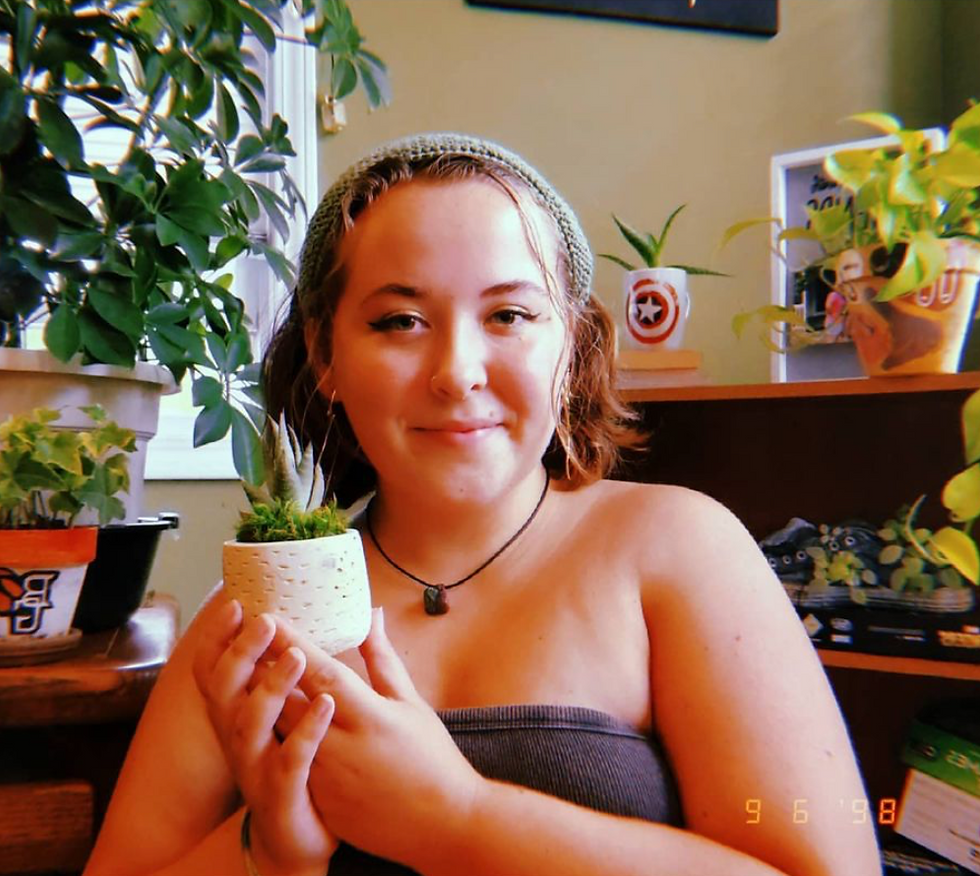Q&A: Beginner’s Guide to Knitting
- Variant Magazine
- Mar 23, 2021
- 3 min read
Updated: Oct 17, 2023
By Grace Dearing, Web Editor
As someone who has never been very skilled with hands-on crafts and art projects, I’m always looking for simple ways to express my creativity. In honor of March being National Craft Month, here is a crash course for beginner knitters and crocheters from Bowling Green State University student, Tay Sauer, founder of Knits and Crannies!
What is knitting? How is it different from crochet?
Knitting is done with two needles and crochet is done with one hook. Knitting generally creates a softer, stretchier fabric that is best for things like baby clothes, bralettes and socks. Crochet is much sturdier and thicker, so it’s best for things like bags, outerwear, and potholders. However, both methods can be used for any type of project as long as you choose the right kind of yarn and right sized hook!
How do I know what size yarn and needle to use for a project?
In the fiber art world, yarn comes in seven different sizes. The size of yarn determines what size needle you should use. On the back of your yarn ball, there is a number inside a black box. This number shows how thick the yarn is. When working off of a pattern, the pattern will tell you what size needle and yarn to use, and will often give you specific yarn brands to use!

Photo from The Spruce
What kind of needle should I get?
I would recommend wooden needles for beginners; they’re not as slippery as plastic or metal and they’re eco-friendly. There are three main types of needles: straight needles, circular needles and double-pointed needles. Straight needles are best for beginner projects, whereas circular needles and double-pointed needles are used for more complicated projects like hats, sweaters and socks.
Where do I start?
Start with a thicker yarn, size four or larger. I first started with Lily Sugar n Cream cotton yarn and size seven needles. The first step is to make a slip knot. This will be the first loop (or “stitch” in knitting terms) on your needle. Sheep & Stitch has a great YouTube series about learning how to knit.
The next step is to cast on the rest of your stitches. This will determine how wide your object will be. There are many different ways to cast on — some make a loose, looping edge and some make a tight, neat edge. Here is the easiest way to cast on.
After you cast on your needles, you need to learn the most basic stitch, the knit stitch! This stitch is thick, stretchy, and great for beginners.
The next easiest stitch is the purl stitch. To purl is basically to knit towards yourself rather than away from yourself.
Once you’ve knit and purled to your desired length, you need to get those stitches off of the needle! This is called binding off or casting off. Here is how to bind off.
What should I make first?
The best place to start is a simple square. This makes dishcloths the perfect place to start. Making dishcloths will help you practice the techniques you need to know to make more complicated knits. Here’s a list of super easy (and free!) dishcloth patterns from The Spruce.
What advice would you give to beginner knitters?

Photo from Tay Sauer
When I first started knitting, I cast on 10 stitches and tried to knit a tiny little rectangle. I ended up knitting something more like a wonky triangle. I used to pull my yarn so tight I could barely get the needles into the loops. But, I kept practicing and eventually ended up knitting close to 15 dishcloths over the course of the summer. Now, I can knit all kinds of things, and I’ve started getting into crochet as well. Most of the things that you’ll knit when you first start out will look pretty bad, but once you get the hang of it, you can create some beautiful work. Just practice, be patient and have fun!

Comentarios